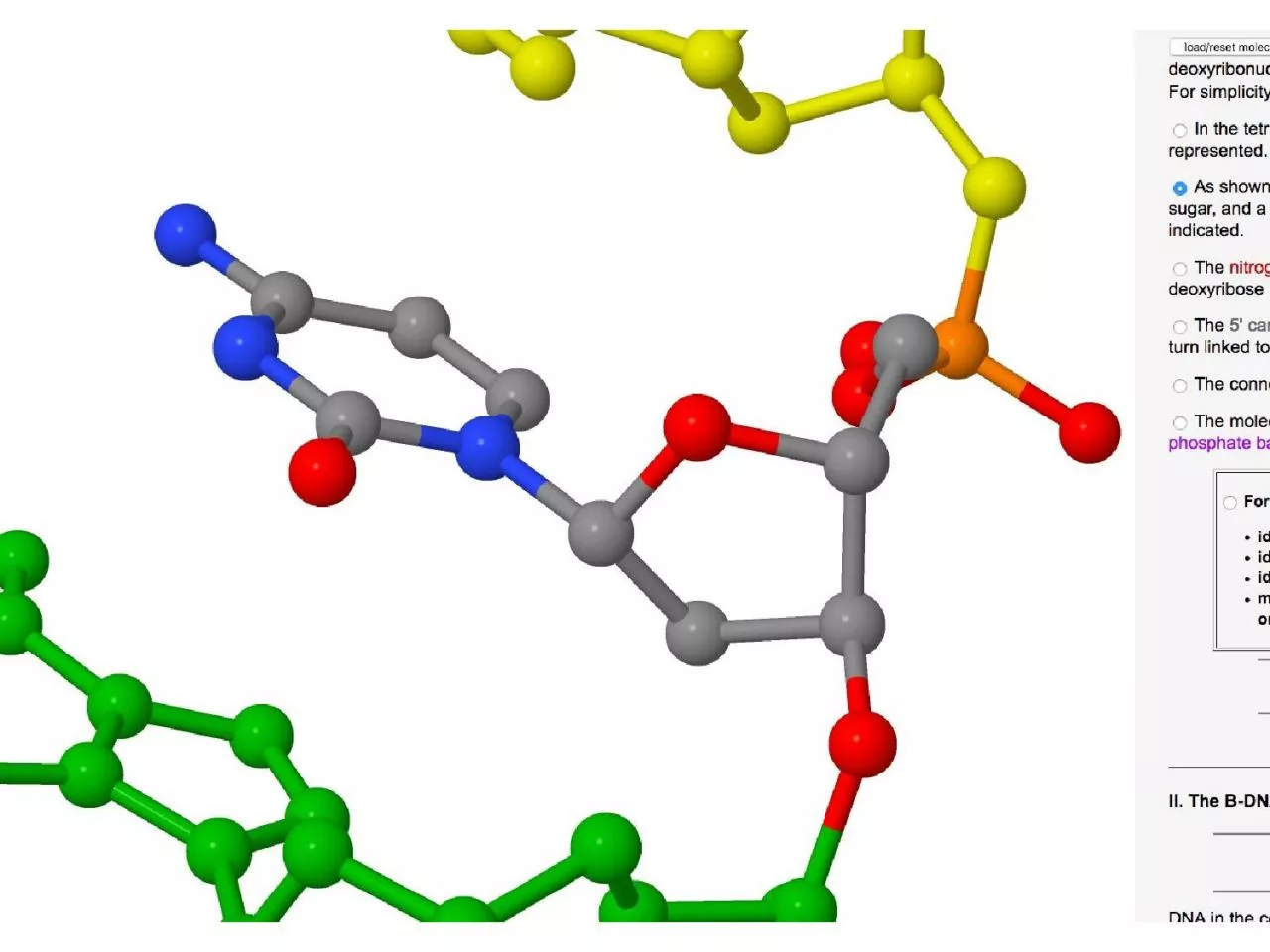

a 4 nucleotide SINGLE stranded DNA molecule 2 Determine the sequence of Nbases in your single strand of DNA identify the order of bases 3 Again collaboratively build a second single DNA strand that you think should be complementary to the first strand based on AT and GC base pairing ru ID: 933989
Download Presentation The PPT/PDF document "1. Using your nucleotide models, collabo..." is the property of its rightful owner. Permission is granted to download and print the materials on this web site for personal, non-commercial use only, and to display it on your personal computer provided you do not modify the materials and that you retain all copyright notices contained in the materials. By downloading content from our website, you accept the terms of this agreement.
Slide1
Slide21. Using your nucleotide models, collaborate in groups of 3 with your table partners to build
a 4 nucleotide, SINGLE stranded DNA molecule.2. Determine the sequence of N-bases in your single strand of DNA (identify the order of bases)3. Again, collaboratively, build a second, single DNA strand that you think should be complementary to the first strand based on A-T and G-C base pairing rules. 4. Try to use the N-base magnets that simulate H-bonding between N-bases on opposite strands of a DNA double helix to click your two single strands into a double helix. What do you notice about the orientation of the two strands?5. Disassemble your double helix, and, as a table, build a 12-bp double helix, using the stands provided as support. Observing the helix, what do you notice about the “grooves”?
DNA Structure: model
building
Slide31
234
5
6
7
8
9
10
11
12
13
14
15
16
17
18
19
20
21
22
Slide4Template DNA
Newly synthesized (polymerized) DNA
RNA primer/s
Slide5a
b
Slide6Slide77
Fig. 14.19
Slide88
Fig. 14.20
Slide99
Fig. 14.17
Slide1010
Fig. 14.22
Slide1111
Fig. 14.23
Slide1212
Fig. 14.24
Slide1313
Fig. 14.26
Slide1414
Fig. 14.26
Slide15Slide161. In
which of the following cells might you expect to find the highest level of telomerase? A. muscle cellsB. oocytesC. neuronsD. cells that replenish the lining of the gut 2. Griffith, a British microbiologist, used bacteria and mice to demonstrate transformation, a discovery that ultimately led to the conclusion that DNA was the molecule of heredity. Transformation is…A. the ability for bacterial homologous chromosomes to transform themselves into an exact copy, sometimes referred to as DNA replication.B. the ability of the nucleus of a cell to regenerate and repair itself when damaged by bacterial infections.C. the ability of the infected mice to transform the bacteria from pathogenic to non-pathogenic during the experiments.D. the ability to transfer genetic materials from one cell to another.
E. the ability for the nucleus of a bacterial cell to bypass the process of DNA replication by transforming into a spore during unsuitable environmental conditions.
Slide173. What is the reason that a genetic approach is often taken to understanding biological mechanisms?
A. DNA mutations disrupt single components of a processB. inheritance is directed by DNAC. proteins are encoded by DNAD. RNA is transcribed from a DNA template4. Deoxyribose has a "free arm," a carbon that is not a member of the pentose ring (5’ carbon). To which direction does this 5’ carbon “point” during DNA replication? A. in the same direction as which the template strand is readB. in the opposite direction from which the template strand is readC. in the same direction in which the primer strand is being synthesizedD. in the opposite direction as the gravitational field5. Which of the following DNA sequences is complementary to 5'-ATGGTCAGT-3' ? A. 5'-ATGGTCAGT-3'B. 5'-TGACTGGTA-3'
C. 5'-TACCAGTCA-3'
D. 5'-ACTGACCAT-3'